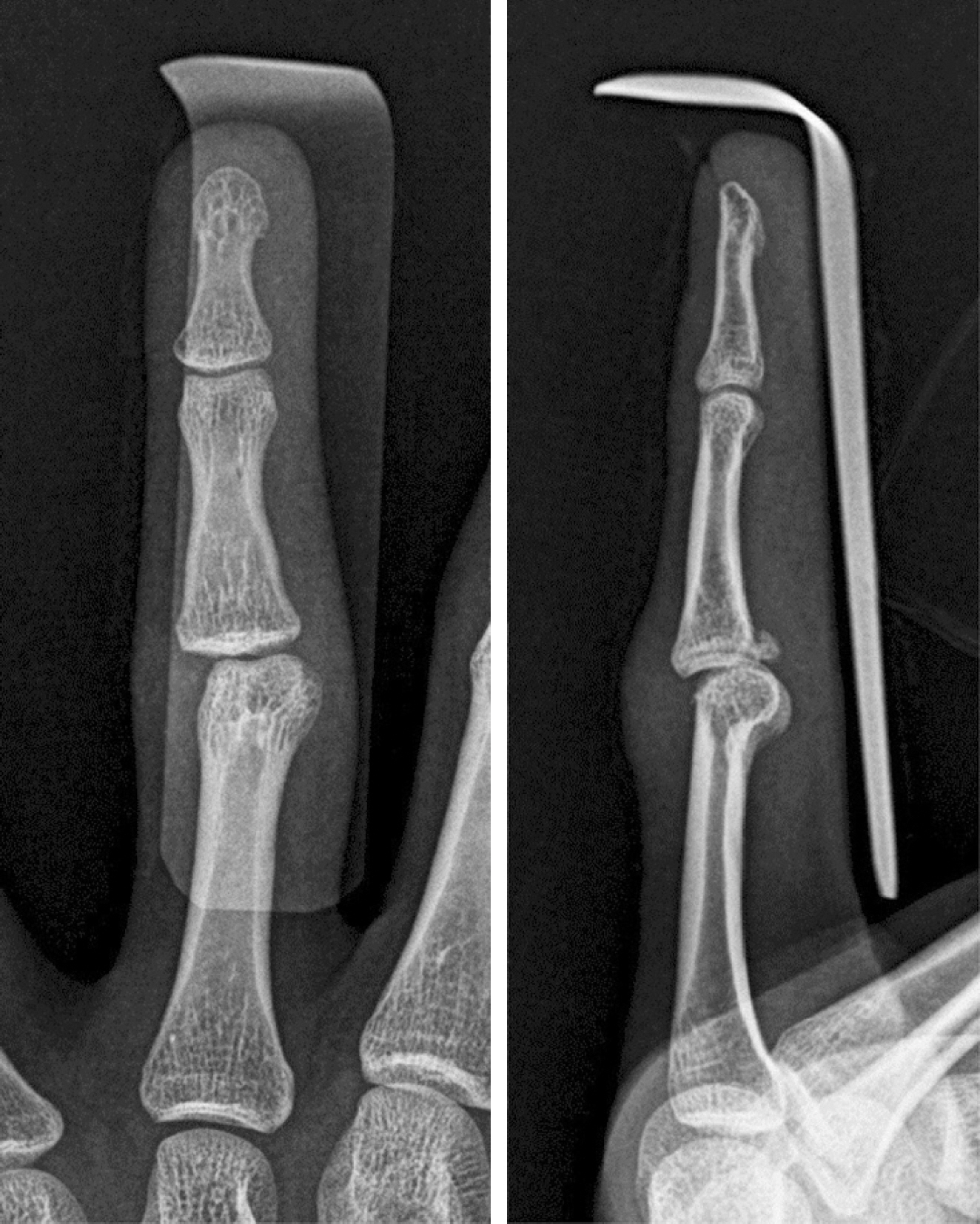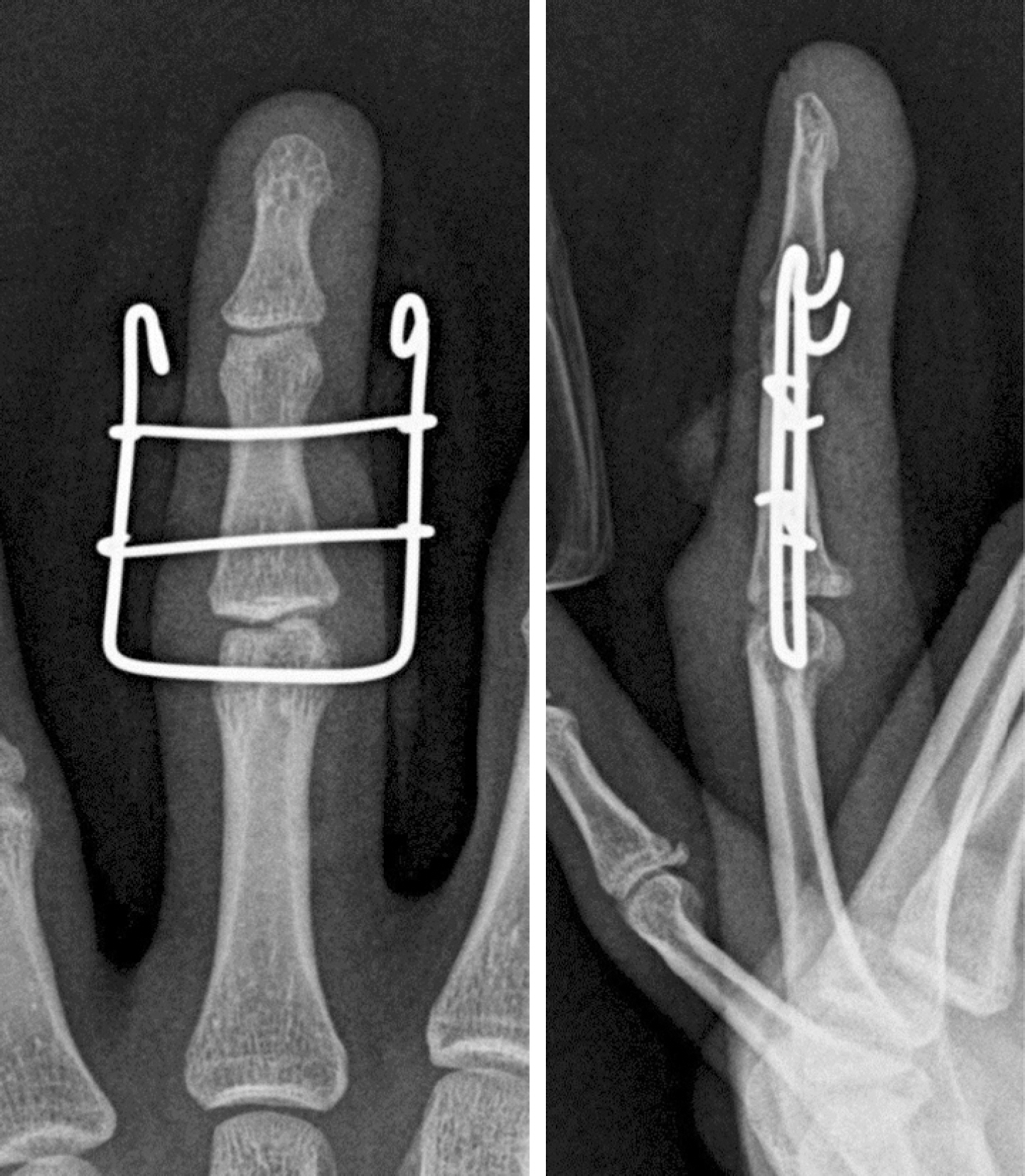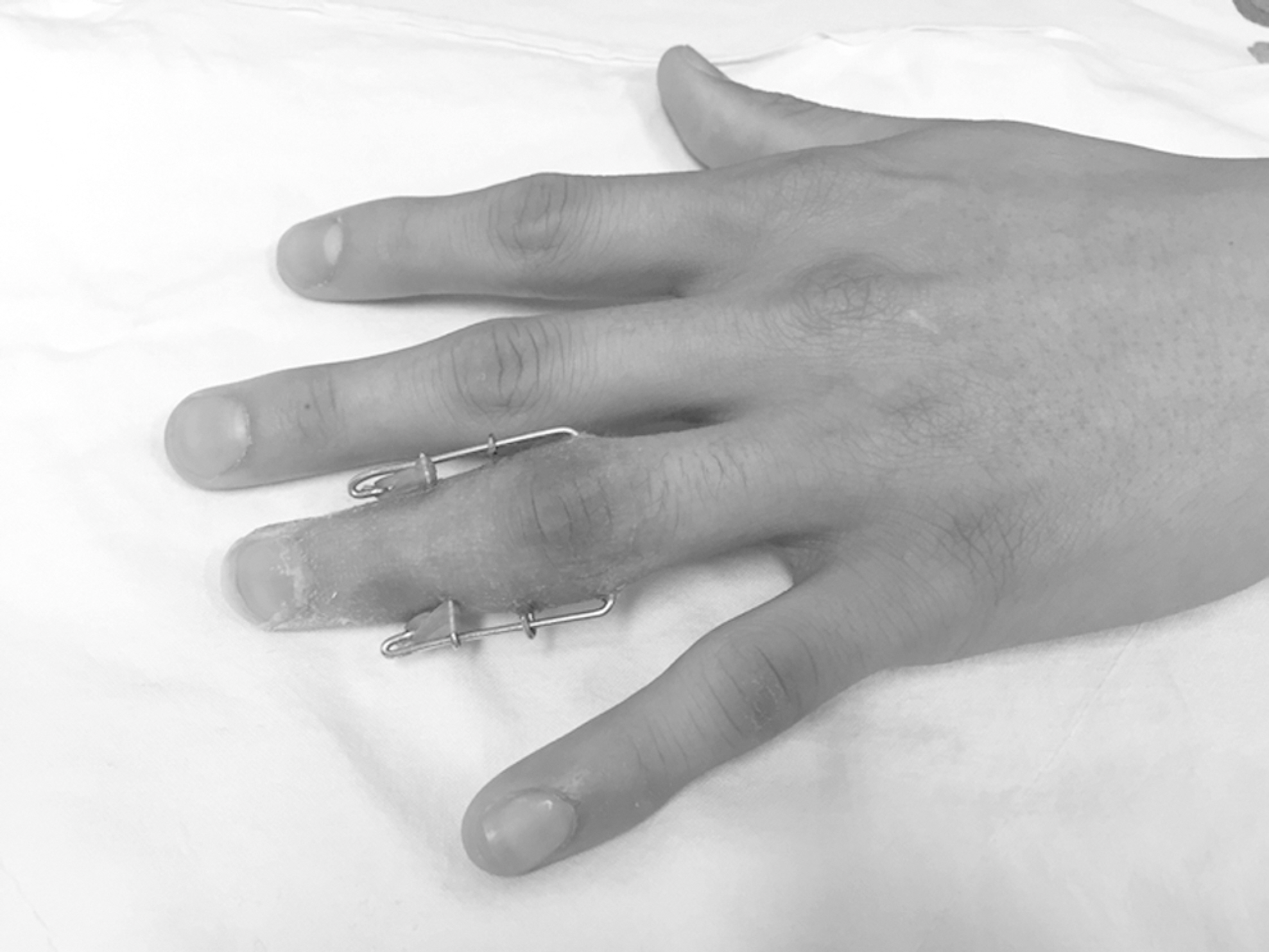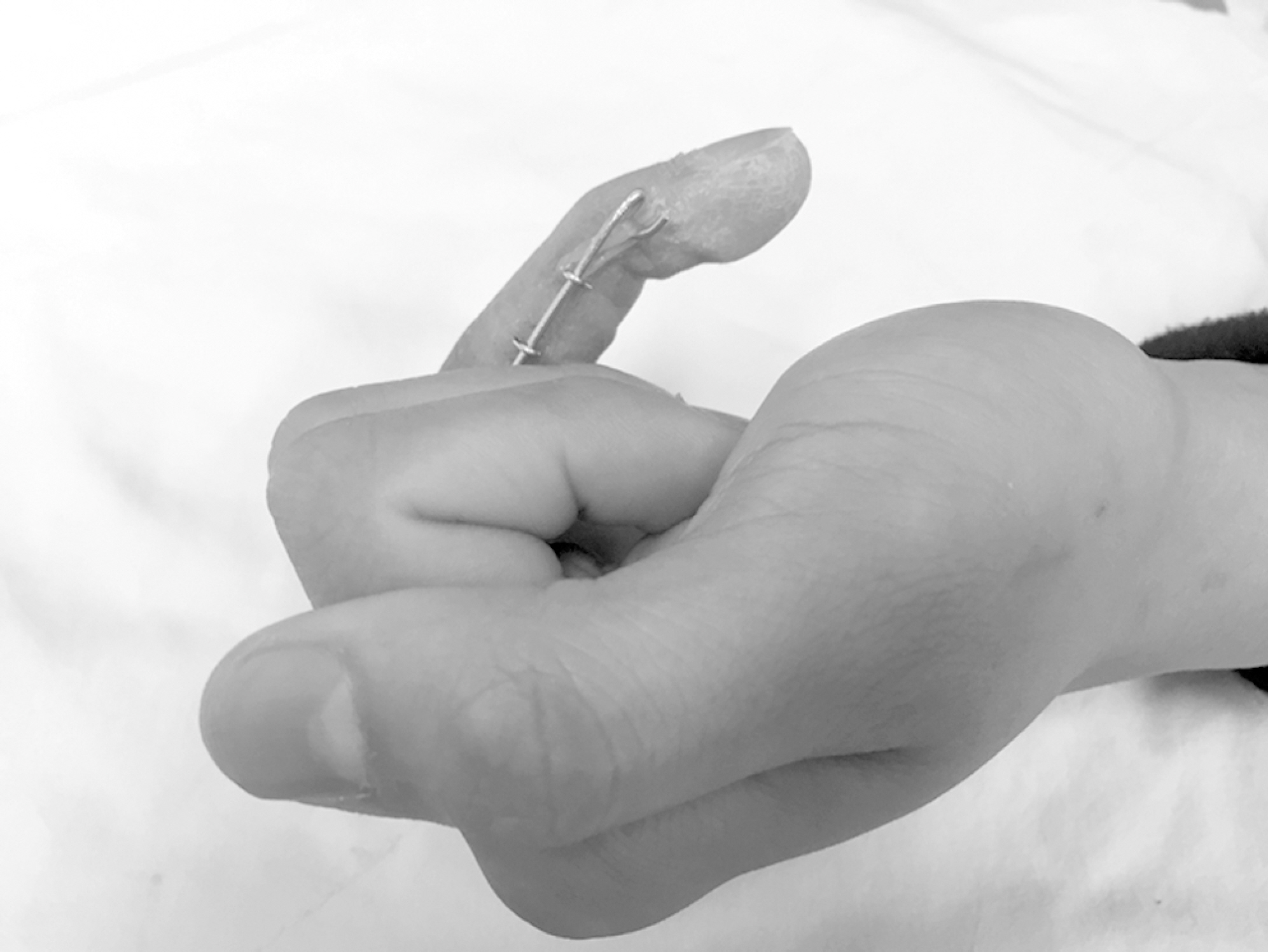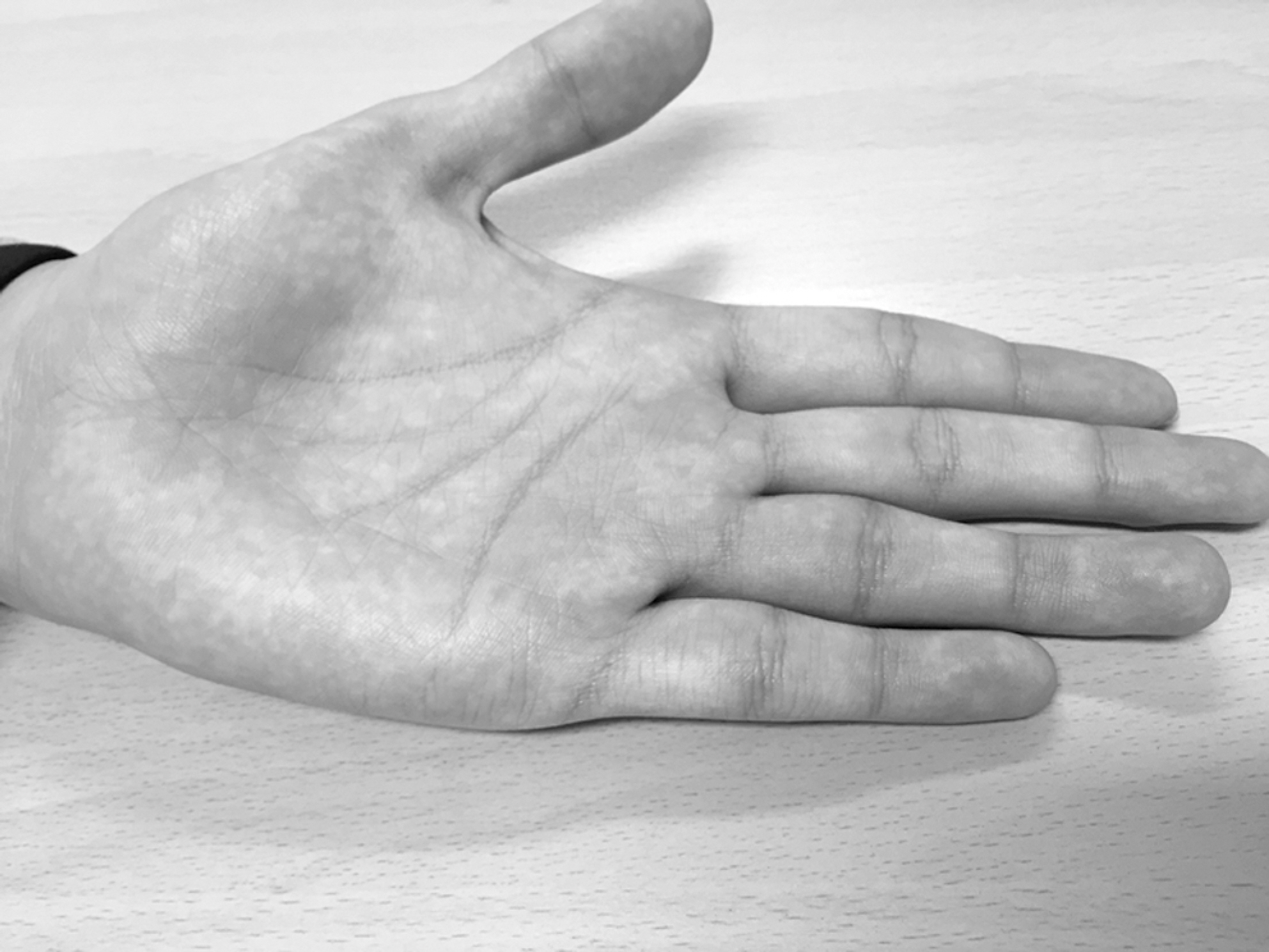J Korean Fract Soc.
2019 Jan;32(1):1-5. 10.12671/jkfs.2019.32.1.1.
Use of a Distraction Dynamic External Fixator in the Treatment of Comminuted Middle Phalanx Base Fractures
- Affiliations
-
- 1Department of Orthopedic Surgery, Ulsan University Hospital, University of Ulsan College of Medicine, Ulsan, Korea. lunarticguy@naver.com
- KMID: 2432491
- DOI: http://doi.org/10.12671/jkfs.2019.32.1.1
Abstract
- PURPOSE
This paper suggests the use of distraction dynamic external fixators (DDEF) for the treatment of proximal middle phalanx fractures.
MATERIALS AND METHODS
Seven patients, who were diagnosed with comminuted intra-articular fractures at the base of the middle phalanx from February 2014 to November 2016, were enrolled in this study (volar aspect 6 cases, dorsal aspect 1 case). They underwent a closed reduction under a C-arm image intensifier, and DDEF was applied with general anesthesia. Range of motion (ROM) exercise was encouraged after 3 to 5 days postoperatively, and DDEF was removed after 5 weeks. Subluxation, angulation and displacement were evaluated 6 weeks postoperatively.
RESULTS
The patients who were treated with DDEF showed a normal proximal interphalangeal joint ROM (100°), and there was no subluxation or displacement on the X-ray film 6 weeks postoperatively. In addition, there were no signs of infection, such as local heat, redness, and pus-like discharge.
CONCLUSION
DDEF helps maintain the reduction and reducing forces through the ligamentotaxis. The joint stiffness is reduced, which it makes early return to daily life easier.
Keyword
MeSH Terms
Figure
Cited by 1 articles
-
Treatment of Neglected Proximal Interphalangeal Fracture Dislocation Using a Traction Device: A Case Report
Yongun Cho, Jai Hyung Park, Se-Jin Park, Ingyu Lee, Eugene Kim
J Korean Fract Soc. 2019;32(4):222-226. doi: 10.12671/jkfs.2019.32.4.222.
Reference
-
References
1. Zemel NP, Stark HH. Problem fractures and dislocations of the hand. Instr Course Lect. 37:235–249. 1988.2. Lee JY, Teoh LC. Dorsal fracture dislocations of the proximal interphalangeal joint treated by open reduction and interfragmentary screw fixation: indications, approaches, and results. J Hand Surg Br. 31:138–146. 2006.
Article3. McElfresh BC, Dobyns JH, O'Brien ET. Management of fracture-dislocations of the proximal interphalangeal joints by extension-block splinting. J Bone Joint Surg Am. 54:1705–1711. 1972.4. Suzuki Y, Matsunaga T, Sato S, Yokoi T. The pins and rubbers traction system for treatment of comminuted intraarticular fractures and fracture-dislocations in the hand. J Hand Surg Br. 19:98–107. 1994.
Article5. Ruland RT, Hogan CJ, Cannon DL, Slade JF. Use of dynamic distraction external fixation for unstable fracture-dislocation of the proximal interphalangeal Joint. J Hand Surg Am. 33:19–25. 2007.6. Mansha M, Miranda S. Early results of a simple distraction dynamic external fixator in management of comminuted intraarticular fractures of base of middle phalanx. J Hand Microsurg. 5:63–67. 2013.
Article7. Schenck RR. Dynamic traction and early passive movement for fractures of the proximal interphalangeal joint. J Hand Surg Am. 11:850–858. 1986.
Article8. Agee JM. Unstable fracture dislocations of the proximal interphalangeal joint. Treatment with the force couple splint. Clin Orthop Relat Res. 214:101–112. 1987.9. Fahmy NR, Harvey RA. The “S” quattro in the management of fractures in the hand. J Hand Surg Br. 17:321–331. 1992.
Article10. Hamilton SC, Stern PJ, Fassler PR, Kiefhaber TR. Mini-screw fixation for the treatment of proximal interphalangeal joint dorsal fracture-dislocations. J Hand Surg Am. 8:1349–1354. 2006.
Article11. Salter RB. The physiologic basis of continuous passive motion for articular cartilage healing and regeneration. Hand Clin. 10:211–219. 1994.
Article12. Johnson D, Tiernan E, Richards AM, Cole RP. Dynamic external fixation for complex intraarticular phalangeal fractures. J Hand Surg Br. 29:76–81. 2004.
Article13. Krakauer JD, Stern PJ. Hinged device for fractures involving the proximal interphalangeal joint. Clin Orthop Relat Res. 327:29–37. 1996.
Article14. Ellis SJ, Cheng R, Prokopis P, et al. Treatment of proximal interphalangeal dorsal fracture-dislocation injuries with dynamic external fixation: a pins and rubber band system. J Hand Surg Am. 32:1242–1250. 2007.
Article
- Full Text Links
- Actions
-
Cited
- CITED
-
- Close
- Share
- Similar articles
-
- Treatment of Intraarticular Fractures of the Distal Radius with Dynamic External Fixator
- Treatment of the Difficult Fractures of the Femur using the Ilizarov External Fixator
- Treatment of Lower Limb Fractures by External Skeletal Fixator Preliminary report
- The Limited Experiences in the Management of the Difficult Fractures of Tibia Using the Ilizarov External Fixator
- Treatment of Commiuted Fractures of the Proximal Tibia Using Ilizarov External Fixator

